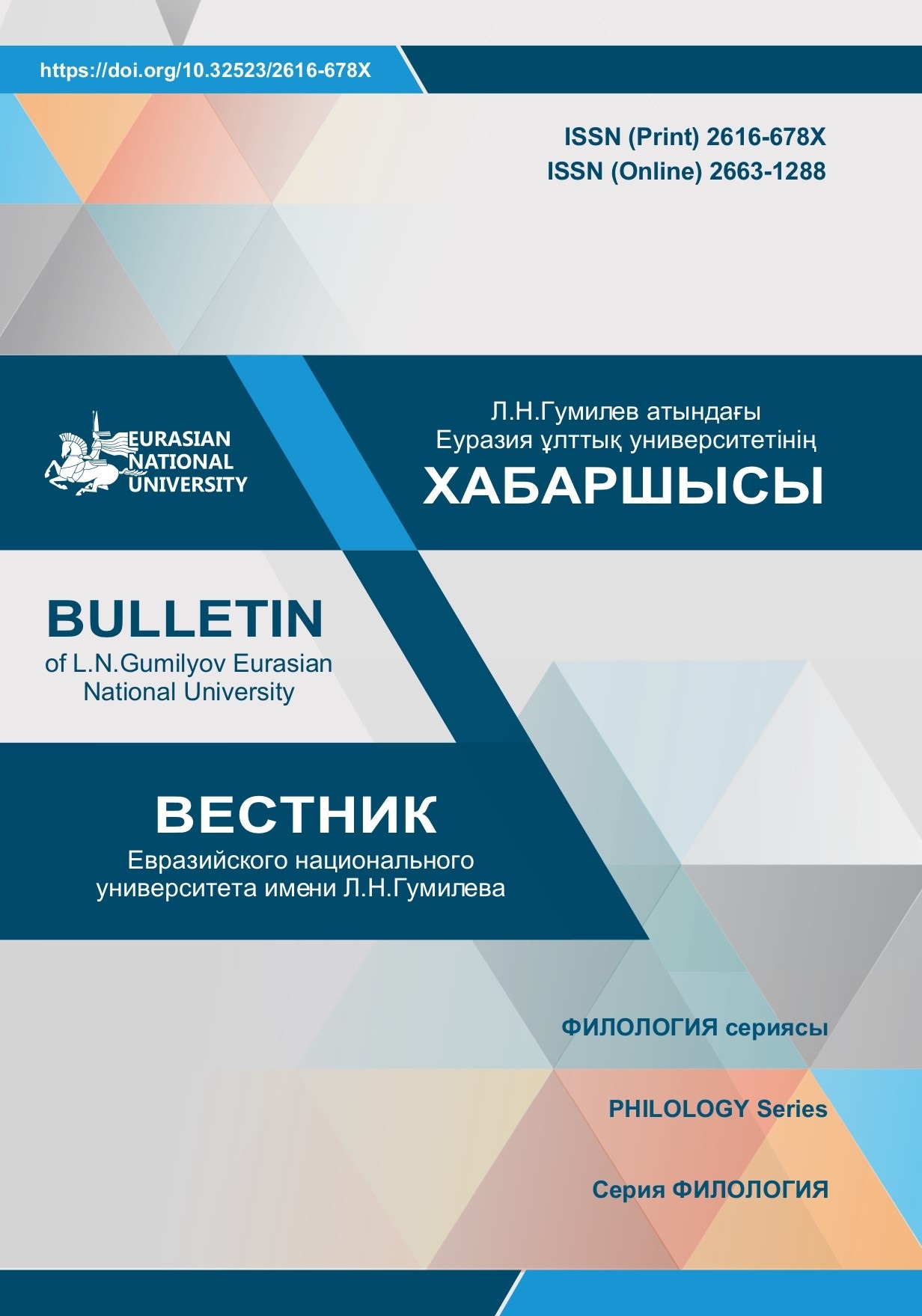The function of a detail in the literary text structure
Views: 301 / PDF downloads: 444
DOI:
https://doi.org/10.32523/2616-678X-2024-147-2-158-166Keywords:
text formation, detail, poetry, literary text, symbol, structure of poems.Abstract
The article determines the role of artistic details in poetic texts and the poets’ role in
transmission of their philosophical knowledge, psychological mood and aesthetic thought. The meaning of concepts in artistic image has been revealed, and the images designated in the poet’s artistic memory have been analyzed. In order to demonstrate the function of artistic detail in the text structure, analysis of the poems of N. Aituly, E. Raushanov, T. Abikakimuly, M. Raiymbekuly have been conducted.
The poet’s thoughts, ideas, views, knowledge, and expressive emotions in modern poetry are reflected through details. The elements and details form a text system on an artistic level. This raises a new image, a new style, and a unique structure. The author’s main idea and position in poetry makes use of certain
methods to bring an idea to the reader. The language units in poetry form an artistic system, and a detail in the mechanism of this system becomes the basis of new images with its semantic and symbolic meaning.
The formation of details full of innovative searches occupies a special place in the artistic-figurative system of modern Kazakh poetry. The function of artistic detail in the text was considered on the example of poetic
works and comprehensively analyzed .
The text structure of a literary work consists of macro and micro details. Some of them are clear, open and visible, while others are with a hidden meaning and subtext. The analysis concludes that the details used by poets for images in various forms make up the basis of the text.







